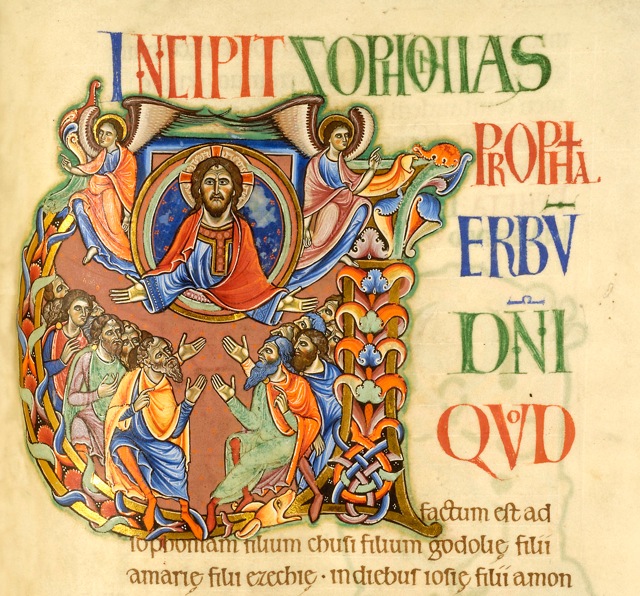In the Cathedral of the ancient capital city of Wessex, and where many pre-conquest kings are buried, there reposes a wonderful illustrated Bible. Called ‘The Winchester Bible’, it is currently in four volumes. The work is very large (measuring approximately 23 x 16 inches each folio). The Bible was probably commissioned by Henry of Blois in c1160AD. Henry was, at the time, the Bishop of Winchester.
The Bible is currently in four volumes, having been re-bound on more than one occasion. It is usual for the authorities to display at least one volume. On occasion volumes are sent out on loan to museums and other centres.
The written text was done by a single scribe. The Bible is virtually complete, (certain pages being missing - stolen, lost or damaged beyond repair). The basis of the content is that of the 4th Century Vulgate of St Jerome. There are hundreds of folios of the highest quality calfskin, requiring the sacrifice of large herds of animals.
Research has revealed that the illustrations, decorations and illumination were accomplished by at least six artists. The colours, including shimmering gold and the rare lapis lazuli, are as vibrant now as when they were laid down. One very important characteristic of use to scholars of the art and craft of Calligraphy and Illumination is that many designs are unfinished. This gives a remarkable insight into how the illumination was prepared and sketched in before the application of colour.
The reader will find an inspection of this great Bible most rewarding.
Rod Dawson





